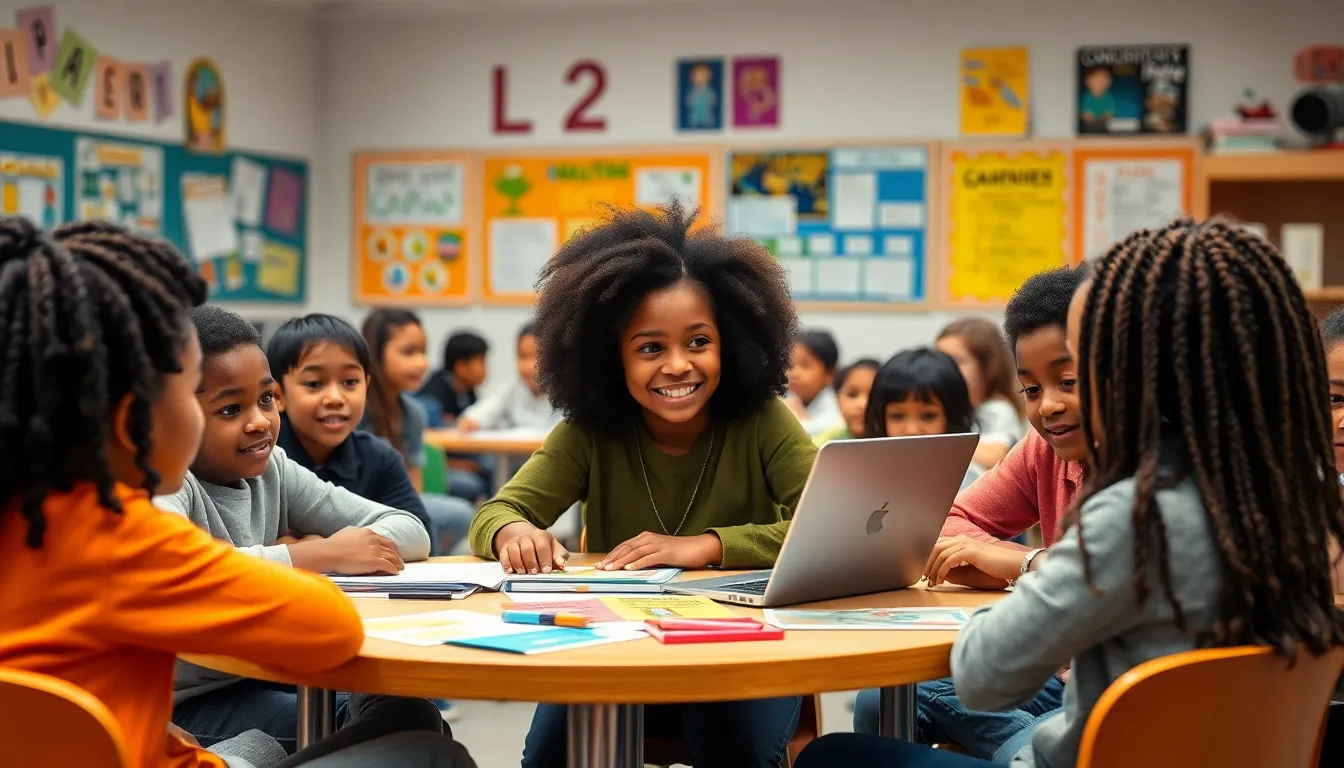Learning assessments might sound like a snooze-fest, but they’re the secret sauce to unlocking a student’s potential. Imagine trying to bake a cake without knowing if you’ve got the right ingredients—chaos, right? That’s what education feels like without effective assessments. They’re not just tests; they’re the GPS guiding educators and learners through the winding roads of knowledge.
Table of Contents
ToggleOverview of Learning Assessments
Learning assessments measure a student’s understanding and mastery of subjects. These tools evaluate knowledge, skills, and abilities, guiding educators in their teaching strategies. Different types of assessments include formative, summative, diagnostic, and benchmark assessments. Formative assessments occur during instruction and help identify areas needing improvement.
Summative assessments, such as final exams or standardized tests, occur at the end of an instructional period. They measure overall learning achievements and outcomes. Diagnostic assessments focus on pre-existing knowledge and pinpoint student strengths and weaknesses before instruction begins. Benchmark assessments occur at regular intervals to track progress toward learning goals.
Effective assessments also inform curriculum adjustments and enhance teaching practices. Educators analyze assessable data to tailor instruction, ensuring that content aligns with student needs. Continuous assessment promotes a growth mindset. Using various assessment types enables educators to gain a comprehensive view of student progress and learning experiences.
Students benefit from assessments that provide timely feedback, fostering self-regulation and motivation. Clear communication of expectations and learning objectives enhances the assessment process. Engaging students in self-assessment cultivates ownership of their learning and encourages goal setting.
Incorporating diverse assessment methods addresses different learning styles, making education more inclusive. Additionally, technology plays a crucial role in modern assessments, offering innovative solutions for data collection and analysis. Overall, learning assessments function as essential tools for educators, informing instruction, guiding students, and facilitating effective learning.
Types of Learning Assessments
Learning assessments play a vital role in understanding student progress. Various types exist, each serving unique purposes in the educational landscape.
Formative Assessments
Formative assessments occur throughout the learning process. Teachers use tools like quizzes, discussions, and observations to gauge student understanding. These assessments help identify areas requiring improvement. By gathering ongoing feedback, educators can modify their teaching strategies effectively. Engaging students in these assessments encourages them to take charge of their learning journey. For example, short quizzes administered weekly can provide immediate insights into a student’s comprehension. Additionally, incorporating peer assessments enhances collaboration and fosters a supportive learning environment.
Summative Assessments
Summative assessments evaluate overall student learning at the end of an instructional period. Common examples include final exams, standardized tests, and projects. These assessments measure knowledge retention and mastery of specific content areas. Teachers rely on data obtained from summative assessments to determine whether educational objectives were achieved. Results can inform future curriculum development and teaching methods. For instance, analyzing test scores can reveal trends in student performance across different demographics. Summative assessments provide a comprehensive snapshot of learning outcomes and help guide educational decision-making.
Importance of Learning Assessments
Learning assessments play a critical role in the educational landscape by guiding both students and educators. They help in unlocking a student’s potential and enhance the overall learning experience.
Measuring Student Progress
Measuring student progress is essential for identifying strengths and weaknesses. Formative assessments, like quizzes and discussions, provide ongoing insights into student understanding. Regular feedback informs learners about their performance and promotes accountability. Summative assessments give a clearer picture of learning achievements at the end of a term or course. These assessments, including final exams, deliver comprehensive results that help gauge overall performance over time.
Informing Instructional Strategies
Informing instructional strategies hinges on data obtained from assessments. Educators can adjust curricula based on assessment results, tailoring instruction to better meet student needs. Continuous assessment supports dynamic teaching approaches, ensuring that all students engage effectively. Engaging with diverse assessment methods allows for accommodating various learning styles. Utilizing technology in assessments enhances data collection, resulting in more informed teaching practices. Regularly analyzing assessment data empowers educators to fine-tune their strategies and improve student outcomes.
Best Practices in Learning Assessments
Learning assessments play a critical role in educational success. Implementing best practices ensures they effectively enhance teaching and learning experiences.
Designing Effective Assessments
Effective assessments start with clear learning objectives. Assessments align with these objectives to measure specific student knowledge and skills. Incorporating diverse question types engages students and encourages deeper thinking. Maintaining a balance between formative and summative assessments supports ongoing learning and provides comprehensive feedback. Regularly revising & updating assessments aligns them with curricular goals and updates in educational standards. Collecting and analyzing data from assessments offers insights that inform instructional decisions and improve student outcomes.
Providing Constructive Feedback
Constructive feedback encourages student growth and fostering a positive learning environment. Timely communication of feedback helps students understand their progress and areas needing improvement. Specific feedback focuses on students’ strengths and actionable steps for enhancement. Incorporating peer feedback promotes collaborative learning and reinforces critical thinking skills among students. Encouraging self-reflection allows students to assess their understanding and set personalized learning goals. Prioritizing feedback mechanisms ensures continuous improvement of the learning process.
Challenges in Learning Assessments
Learning assessments face several challenges that can impact their effectiveness. These issues must be addressed to enhance educational outcomes and support diverse student needs.
Standardization Issues
Standardization poses significant challenges in learning assessments. Many assessments lack uniformity, making it difficult to compare results across different contexts. Variability in assessment methods can lead to inconsistent evaluations of student performance. Furthermore, cultural biases in standardized tests often skew results, disadvantaging certain student groups. Inconsistencies can undermine stakeholders’ trust in assessment outcomes. Stakeholders, including educators and parents, often question the accuracy of findings derived from non-standardized assessments.
Addressing Diverse Learning Needs
Addressing diverse learning needs represents another critical challenge. Students come from various backgrounds with unique strengths and weaknesses. The one-size-fits-all approach often fails to accommodate these differences. Tailoring assessments to meet individual learning styles can enhance engagement and improve learning outcomes. Many educators face obstacles when designing inclusive assessments that accurately reflect student knowledge. Additionally, insufficient resources or training for teachers hampers their ability to implement effective assessment strategies. Overcoming these challenges is essential for fostering an equitable learning environment.
Conclusion
Learning assessments play a pivotal role in shaping educational experiences. They not only measure student progress but also inform instructional strategies that cater to diverse learning needs. By utilizing various assessment types and embracing technology, educators can create a more inclusive environment that fosters growth.
The ongoing feedback generated from assessments encourages self-regulation and motivation among students. When assessments align with clear objectives, they enhance the learning process and drive meaningful engagement. Addressing challenges such as standardization and cultural biases is essential for maximizing the effectiveness of these tools.
Ultimately, embracing best practices in learning assessments ensures that both educators and students can navigate the complexities of knowledge acquisition more effectively.





